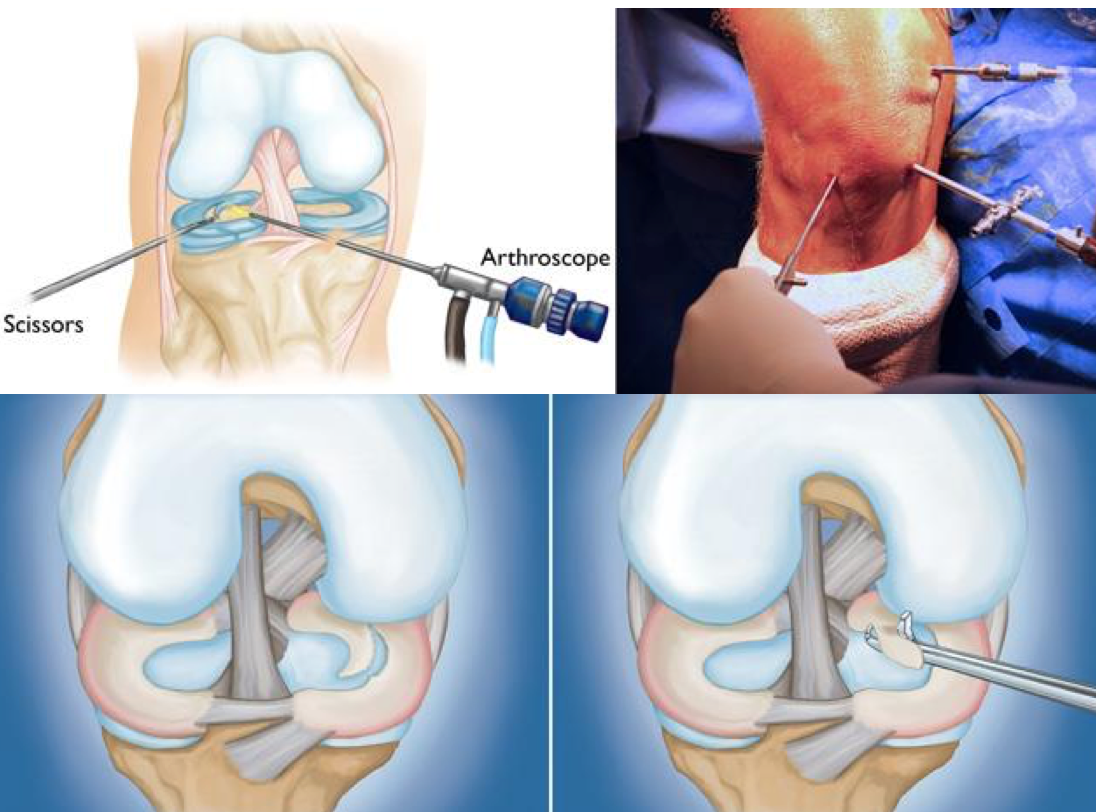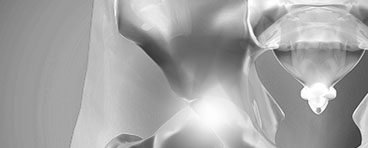Click on the links below to find out more
Knee Arthroscopic Surgery Melbourne
OVERVIEW
Knee arthroscopy is a surgical procedure that allows Dr David Slattery to inspect the knee joint and make a diagnosis without the use of large incisions through skin and soft tissue. During arthroscopy, a small camera referred to as an arthroscope is inserted into the joint which then feeds an image to a video monitor. This practise is also sometimes known as knee scope. Dr Slattery then uses this video feed to guide miniature surgical instruments to perform the knee surgery procedure.
As these instruments and the arthroscope itself are very small, only a very small incision is required compared to that required for open surgery. The use of a smaller incision means that recovery may be faster as less skin and tissue is damaged as part of the surgery, resulting in reduced pain and joint stiffness.
Knee arthroscopy may be recommended by knee surgeon if you have a painful condition that is not responding to more conservative forms of treatment such as rest, physiotherapy or anti-inflammatory medication. Read More
Knee Arthroscopy Surgery by Dr David Slattery
If you’re experiencing pain in your knees that doesn’t respond to treatments such as rest, physiotherapy or anti-inflammatory medications, knee arthroscopy may be recommended. Knee arthroscopic surgery may relieve painful symptoms associated with damaged cartilage surfaces and other soft tissues surrounding the joint. It may also be used as a diagnostic tool prior to knee replacement surgery.
Dr David Slattery carries out knee arthroscopy in Melbourne in several locations, including Victorian Bone and Joint, St Vincent’s Hospita, Knox Private Hospital and Holmesglen Private Hospital. It’s a quick procedure with rapid recovery and delivers a good outcome for patients.
What is Knee Arthroscopic Surgery?
Knee arthroscopy is a surgical procedure that’s carried out to inspect the knee joint in order to make a diagnosis. It doesn’t require large incisions in the skin and soft tissue. The information is gained by feeding a small camera (the arthroscope) into the joint which sends images to a video monitor. The images on the video feed enable the surgeon to guide miniature surgical instruments to perform the arthroscopy. This means that the surgery only requires a very small incision compared to the much larger incision required for open surgery. As this results in less damage to the skin and surrounding tissue, many patients experience faster recovery, reduced pain and less joint stiffness.
Complications post-surgery are rare, usually minor and easily treatable. Possible complications include infection, blood clots, accumulation of blood in the knee and knee stiffness.
When is Knee Arthroscopic Surgery Used?
Knee arthroscopy surgery is suitable for a variety of applications, but is likely to be used for:
- The removal or repair of a torn meniscus
- Reattachment and reconstruction of a torn anterior cruciate ligament
- Removal of inflamed synovial tissue
- Trimming of damaged articular cartilage
- Removal of loose fragments of bone or cartilage
- Treatment of patella (kneecap) problems
- Treatment of knee sepsis
- Clearing or removal of scar tissue
Complications post-surgery are rare, usually minor and easily treatable. Possible complications include infection, blood clots, accumulation of blood in the knee and knee stiffness.
Dr David Slattery Offers Knee Arthroscopy Surgical Procedure in Some Melbourne’s Clinic & Hospital
As a leading orthopaedic surgeon in Melbourne, Dr David Slattery is available for arthroscopic knee surgery consultations in his consulting rooms cross Melbourne. He trained alongside some of the leading orthopaedic surgeons not only in Australia but in the UK and Europe and has over 10 years of experience in carrying out a variety of knee surgeries including arthroscopy and traditional and robotic knee replacement. In addition, he was awarded fellowships by both the Royal Australian College of Surgeons and the Australian Orthopaedic Association, so you can rest assured that you’re in the hands of an expert.
Dr David Slattery is fully committed to open communication and patient-centric care. This means you’ll always receive all the information you need to make a fully informed decision about any recommended procedures.
If you’re having problems with pain in your knees, experiencing reduced mobility or have suffered an injury or damage to a knee, looking for other treatment such as acl reconstruction surgery, partial or total knee replacement. get in touch with Dr David Slattery via the online contact form or at one of his consulting rooms. Or, if you are looking for hip treatmens, Dr David Slattery also provides robotic total hip replacement surgery, arthroscopy hip surgery and hip total replacement. Whether you are seeking help from a professional for the first time or require a second opinion on your injuries, we are more than happy to be at your service. Read Less
Knee arthroscopy may relieve painful symptoms of many problems that damage the cartilage surfaces and other soft tissues surrounding the joint. It may also be used as a diagnostic tool as a prelude to knee replacement.
Knee arthroscopy has diverse applications
Common arthroscopic procedures for the knee include:
- REMOVAL OR REPAIR OF A TORN MENISCUS
Arthroscopy assists in the assessment of the viability of meniscus tissue’s ability to heal, informing decision regarding removal or repair.
- RECONSTRUCTION OF A TORN ANTERIOR CRUCIATE LIGAMENT
Utilised in both ACL repair (reattachment of an intact ligament) and reconstruction of damaged ligament.
- REMOVAL OF INFLAMED SYNOVIAL TISSUE
Referred to as synovitis, inflammation of synovial tissue is assessed with arthroscopy, also assisting in identifying the underlying cause.
- TRIMMING OF DAMAGED ARTICULAR CARTILAGE
Used to measure the extent of cartilage damage, helping to determine the appropriate treatment.
- REMOVAL OF LOOSE FRAGMENTS OF BONE OR CARTILAGE
Used to locate and remove fragments of bone or cartilage that have become loose and begun to move around within the joint.
- TREATMENT OF PATELLA (KNEECAP) PROBLEMS
Helps to identify misalignment or damage to the patella.
- TREATMENT OF KNEE SEPSIS (INFECTION)
Arthroscopic irrigation and debridement (removal of infected tissue) is used to treat knee sepsis.
- CLEARING/REMOVAL OF TIGHT BANDS/SCAR TISSUE
Arthroscopy can be used to assist in treatment of iliotibial band syndrome through lengthening and resection.

(Left) A large meniscal tear called a “flap” tear. (Right) Arthroscopic removal of the damaged meniscal tissue.

Dr David Slattery
FRACS MBBS (Hons) LLB FAOrthA
Dr David Slattery is an orthopaedic surgeon based in Melbourne with over 10 years of experience, with a special focus on hip and knee joint preservation and replacement. With qualifications in both medicine and law, he brings a unique and comprehensive approach to patient care. His surgical techniques are minimally invasive and evidence-based, designed to reduce pain and enhance recovery.
Trained in leading institutions across Europe and the USA, Dr Slattery offers advanced treatments for a wide range of joint conditions. He is deeply committed to patient outcomes and takes pride in tailoring treatment plans to each individual. Whether you’re an athlete or seeking relief from chronic joint pain, his goal is to restore function and improve your quality of life.







